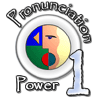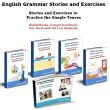Improving Fluency with 20 Books...
Too Good to be True?
Can this course help with improving fluency?
First Name: Kelvin
Product or Service for Review:
Prof. Kev Nair's English Fluency 20 Book Set
I received Kelvin's course review request a couple weeks ago and after some investigation and research I have formed my opinion of the 20 book course that focuses on improving fluency.
Before I share my opinion with you I would like to remind you all that I have not used the course, but have investigated the course using the official website and other internet resources. Remember that my opinion is from the perspective of a professional English teacher and not as a user.
If you visit the website http://www.fluentzy.com/ you will be able to scroll down the page to a list of sample pages from each chapter on improving fluency. Prof. Kev Nair has provided a large amount of material from each of the 20 books, making it possible to see what you are buying before hand.
I have reviewed each of the 20 chapter samples and here are my thoughts.
Book B1: Idea Units & Fluency
The first sample page is engaging, interesting and innovative. I read it and I want to read more. I like the ideas that it presents (grouping words rather than thinking in words). It seems more like a university course.
Improving fluency seems possible with this course. I LOVE how it is written in SPOKEN ENGLISH. This is one of the ways that Prof. Kev Nair attempts to improve your fluency.
Who this course is for
It is made very clear on the website that these books are not for beginners. The course is intended for improving fluency for advanced or upper intermediate learners...rather than to learn parts of the lanugage.
Book B2: Speech Generation & Flow Production
This chapter got a bit too technical for my liking. Talking about core words and lots of lists. I don’t like the idea of paying money for lists of words. Lets see what the next chapter talks about.
Book B3: Teaching Your Tongue & Speech Rhythm
I am not sure how the mentioned drills would work. This would obviously need to be done several times a day, because improving fluency is a process.
Do you have the motivation and self discipline to do this? I think that this course has some great ideas but it will only work if you are extremly self motivated and able to do this everyday without fail.
Book B4: Key speech-initiators & Speech-unit Patterns
I think that training your speech organs is good but this approach seems repetitive, mindless and boring. Improving fluency shouldn´t be boring.
Are you willing to sit and repeat these expressions over and over again? If this program seems very mechanical and dry. Let's see where the next chapter takes us.
Book S1: Fluency in Functional English(Part - I)
I agree that we learn languages in order to do things. To communicate with people...but I don’t see how the repetition of these sentences is going to help.
I think that he is trying to get the learner to associate the expressions with the category that they fall under but how many repetitions must one do? I do strongly agree with the idea of doing things aloud. This is vital to improving fluency, speech and listening comprehension.
Book S2: Fluency in Functional English(Part - II)
This is starting to grow on me (I am starting to like it more and more). I think that if this were done properly, that it would help but I fear that it is too dry for people to do it on their own.
If you don’t have a teacher telling you to have something done for next week or have a class to motivate you to get something done, I think that you might easily buy the product and then place it on the shelf to collect dust.
Book S3: Fluency in Telephone English and Sectoral English
Regarding telephone English this portion doesn't really teach you much (at least this is the impression I got from the sample). I think that learners know speaking on the phone is harder because you can not see the person who you are speaking with.
Again with the repeating! On the 6th page he was starting to win me over but now I am not so sure. Does improving fluency require so much repetition?
Let's look at the next chapter sample.
Book B5: How to deal with hesitation
The author is loosing me or rather my interest. I think that the author has great ideas but the presentation seems very technical in this chapter.
I agree that pausing in the right places is important but to specify different types of pauses seems to be focusing on the mechanics rather than communication.
Let's see what the next chapter tell us.
Book B6: Oral Training in Fluency Vocabulary (Part - I)
Ok I think that Prof. Kev Nair is finally reading my mind. He finally explaines why he insists on repeating all of those simple sentences. It is not to learn them specifically but to add them to you conscious or subconscious mind so that they can be used later.
This is gold! Improving fluency is achieved when you learn wordsin context as outside context words are meaningless. Lets see how he aims to do that. This chapter was interesting.
Book B7: Packing of Information in Speech
I skimmed this chapter sample.
Book B8: Impromptu Speech Flow Techniques
I liked this chapter sample. The re-ordering of sentences really made sense, like “when does the bus come?” “the bus-When does it come?” He talks about improving fluency by learning more about how to structuer sentences.
Book S4: Fluency Building & Mouth Gymnastics
This chapter seems very promising. It makes sense that tongue twisters are too difficult, as they pose a challenge to native speakers too.
Improving fluency isn't about confusing learners, but rather providing them with the tools and direction to improve. I am interested to know what the activities and gymnastic exercises are.
Book S5: Fluency in Speaking About People
This chapter discusses the difficult skill of describing people. Being able to describe abstract things is definitely a skill needed in daily life.
I am still wondering about the effectiveness of just repeating these word groups over and over again. Although for a company that I used to work for, most of the grammar was learnt through translation lists and repetition.
Book B9: Fluency in asking questions
Here we are introduced to the art of questioning. I believe that this chapter is vital to improving fluency.
I totally agree with Dr. Kev Nair. If you do not know how to ask questions, “on your feet” or “on the fly” (meaning…improvising them), then you will be held back greatly.
Book B10: Oral training in fluency vocabulary (Part - II)
Again the concept of the chapter is great. It is very true that most people hesitate initially when they have to make a response. So studying these response-initiator word groups seems very useful.
In the same text on the website it then shows you a HUGE list of questions and responses. If you the student are expected to read through those examples aloud, I am not sure how many people would have the will power to do that for more than 2 minutes.
Book B11: Fluency and Moment-to-Moment Speech Production
I love how he identifies “speech composition” and the need for it. All of the real life factors (pauses, mistakes, repeated words etc) are needed for your speech to sound natural.
I read the first paragraph example (with forced speech composition and then the paragraph without any pauses and the difference was amazing!)
Book S6: Fluency in Topicwise English (Part - I)
Here Dr. Kev Nair speaks about broadening your vocabulary. He focuses on several groups;
1). Driving.
2). Vehicle repairs and maintenance.
3). Clothes.
4). Weather.
5). Money.
6). Entertainment & Leisure.
7). Sports & Games.
Each group has words, which are presented in context for each group. Then the words are again introduced, within context, for other groups. For example you might see something about breaks in the first group “Driving”…I had to hit the breaks…and then you would see it again in the “Vehicle repairs and maintenance” group…The breaks were totally shot.
Book S7: Fluency and Pronunciation
In this chapter we return to the idea of words being clustered or grouped together. What English learners must realize is that words are not perfectly pronounced and spaced when native speakers speak. We group words together which makes it difficult for learners to understand.
My Opinion of Prof. Kev Nair's
20 Book Fluency Course
Improving fluency is something that is hard to do. When people look for courses, it is my experience that, they want to have a quick fix, a miracle program to make their English better.
What does Prof. Kev Nair's course promise to do?
It says that it will give you the tools to improve your fluency with self study. If you purchase this course you will receive 20 well written guides to walk you through your process of improving fluency.
What you might have noticed in my review of each chapter is that I mention (several times) that the course seems a bit dry and boring.
The books are interesting to read (for me as a native speaker) but I am not sure if they will capture the interest of English learners.
Specifically the parts where the learner must sit and repeat sentences aloud...over and over again. This may work, but I think most people would get bored after a short period of time.
So would I recommend this course to anyone?
In general. No, but it may work...
- If you are an upper-intermediate or advanced learner.
- If you do not get bored or frustrated by repeating words and sentences over any over again.
- If you are VERY self disciplined and motivated. (I would hate for people to buy any product and then have it just sit on a shelf in your house.
I hope that this helps you Kelvin...and anyone else who is considering buying this course.
Happy learning!
Diana
After improving fluency...read some more COURSE Reviews
Still looking? Search the site for exactly what you need using the site search box below.
Happy exploring!
Discover these Amazing ESL Materials!
 |
 |
 |
 |
 |
 |
 |
 |
 |
 |
New! Comments
What do you think about this page? Leave me a comment in the box below.